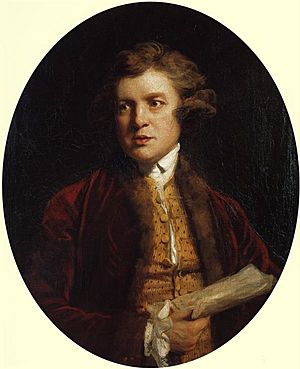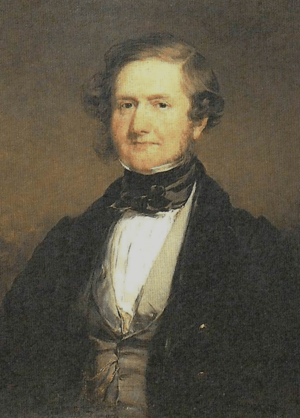Charles Rogers (collector) facts for kids
Charles Rogers FSA (born August 2, 1711 – died January 2, 1784) was an English customs official. He was also famous as a collector of art. Rogers wrote about drawings and became a member of the important Royal Society.
Life of Charles Rogers
Charles Rogers was born in London on August 2, 1711. His parents were William and Isabella Rogers. In May 1731, he started working at the customs house. There, he met William Townson, who was his boss. Townson loved art and collecting books, and he shared this interest with Rogers.
In 1740, Townson left his property to Rogers. This included a house in London that had many art treasures. Rogers moved into this house in 1746. In 1747, he became a clerk in the customs office.
Rogers had many friends who were interested in art and history. Through his friend Arthur Pond, Rogers became a member of the Society of Antiquaries of London in 1752. He also joined the Royal Society in 1757.
Rogers built a large collection of prints. His friends, like Horatio Paul and Robert Udny, helped him find new pieces. He was well-known among artists and people who studied old things. Charles Rogers never married. He passed away on January 2, 1784, and was buried in the Laurence Pountney churchyard.
Charles Rogers's Works
Rogers's most important work was a book published in 1778. It was called A Collection of Prints in Imitation of Drawings. This book had copies of original drawings by famous artists. The book had 112 plates, which are like pages with pictures. Many famous engravers, like Francesco Bartolozzi and William Wynne Ryland, created these copies. Some of the drawings were from Rogers's own collection.
The book included drawings by artists like Raphael, from the collection of Joshua Reynolds. Rogers also bought drawings from a dealer in 1762 that had belonged to Niccolò Gabburri. One living artist, Vieira Lusitano, also had his work included.
In 1782, Rogers also published a translation of Dante's Inferno. He also wrote for magazines like Archæologia and The Gentleman's Magazine.
Rogers's Legacy and the Cotton Collection
After Charles Rogers died, his art collections went to his sister's husband, William Cotton. Then, the collections passed to William Cotton's son, also named William Cotton. This younger William Cotton sold a large part of the collection in 1799 and 1801.
The rest of the collection went to his son, William Cotton, when he died in 1816. This William Cotton (born 1794, died 1863) was a member of the Society of Antiquaries. He lived in Surrey and Devon. In 1836, he published a list of the items in the Rogers collection.
William Cotton later gave the collection to the Plymouth Public Library in two parts, in 1852 and 1862. A special room was built for it, and it opened to the public on June 1, 1853. It was called the Cottonian Library. In 1916, the collection moved to the Plymouth City Museum and Art Gallery.
The collection was very impressive. It included four portraits by Sir Joshua Reynolds. There were also about five thousand prints, some very old printed books, and beautiful handwritten books from the 1400s. The collection also had carvings, models, and medals.



